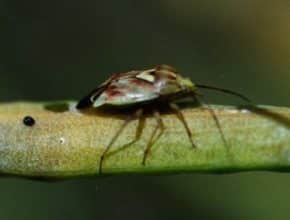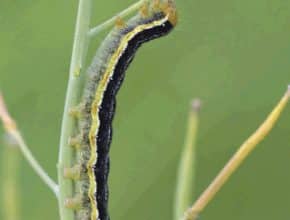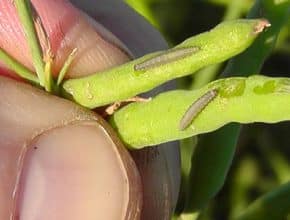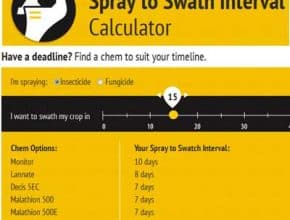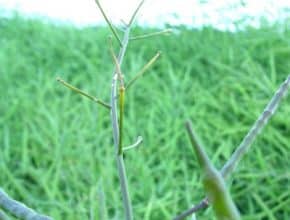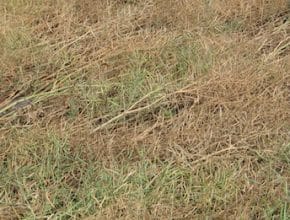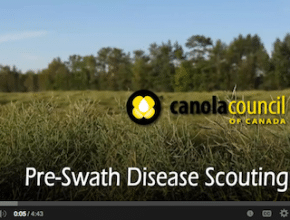Threshold tables for lygus suggest, for example, that if canola is $12 per bushel and spray costs $8 per acre, the threshold at the early pod stage is 5 lygus adults or late instar nymphs per 10 sweeps. Current thinking is that 5 lygus per 10 sweeps (0.5 per sweep) is too few to warrant a spray, and that the…
Canola Watch Posts
-
-
-
Thresholds are 100-150 larvae per square metre in immature to flowering plants and 200-300 larvae per square metre (20-30 per square foot) in plants with flowers and pods. While these nominal thresholds are based on dense stands of 150-200 plants per square metre, plant population is not a major factor. Fewer plants will have more branching and more pods, so…
-
-
-
-
Distinguished pests. CCC agronomists launch a new video (embedded above) this week with tips and helpful images for your pre-harvest disease scouting routine. Who ya gonna call? More tank mixes and more time stress create all sorts of scenarios for crop-damaging mistakes. Hopefully the two parties can figure out the problem and resolve this situation amicably. If not, a consulting…
-
The areas in orange and red have had the most days with maximum temperatures of 28°C or above in July. These hot days can cause higher levels of flower abortion, especially if they come in combination with warm nights. Areas in light green have had 2 to 4 days with maximum temperatures of 28°C or more, and dark green areas…
-
We have three questions on insects plus a mystery question (shown in the photo above). We don't know what this is, and we're hoping you might…

